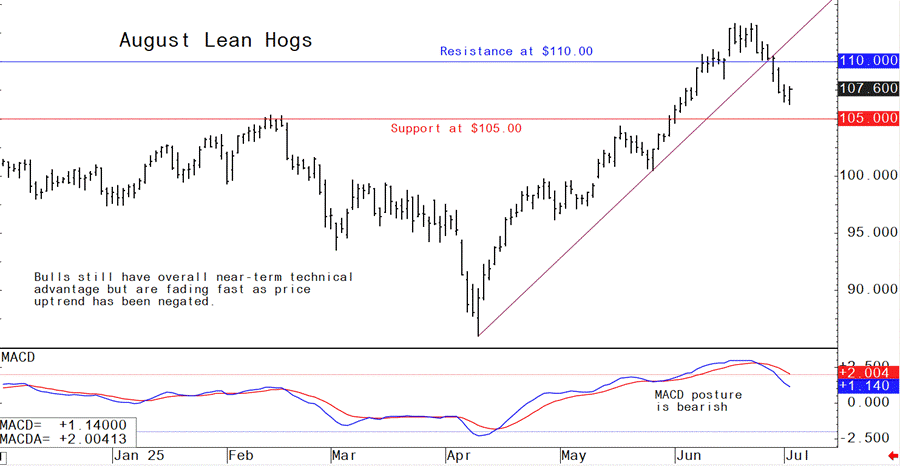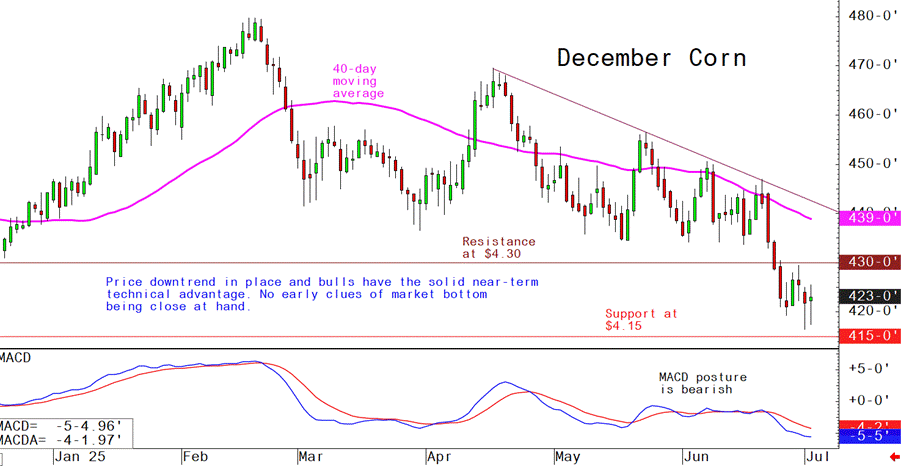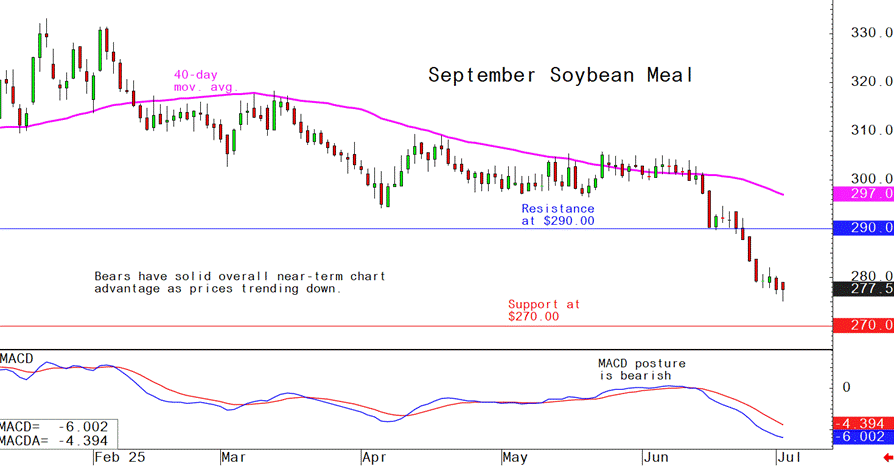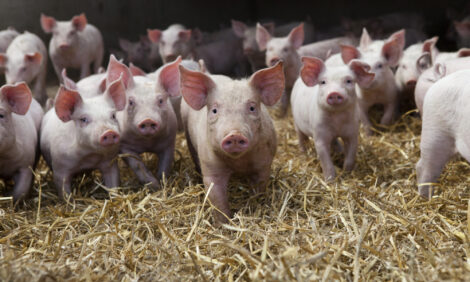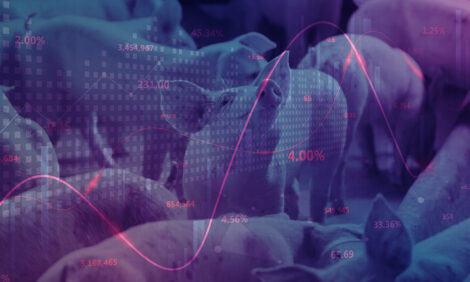



Pig outlook: Lean hog futures bulls are fading fast
Livestock analyst Jim Wyckoff reports on global pig newsAugust lean hog futures prices have backed well down from the June high, to begin to suggest a market top is in place. Cash hog and beef market fundamentals appear to have topped seasonally. The latest CME lean hog index is down 77 cents to $110.99 as of June 30. Pork cutout has shown weakness recently as well, falling another $3.07 to $112.30 on Tuesday, led by weakness in butts, bellies and ribs. Cutout is now $10.81 below the June 24 peak. Last week’s USDA Hogs & Pigs Report favored the bearish camp. Also, the lean hog futures market appears to have topped right around the annual low in hog slaughter.
Turkey shuts livestock markets nationwide amid FMD outbreak
Turkey has temporarily closed all livestock markets across the country to halt the spread of a highly contagious new serotype of foot and mouth disease (FMD), the ag ministry announced. The outbreak intensified following Eid al-Adha, when the traditional slaughter of animals increased livestock movement and heightened transmission risks. Authorities are deploying vaccination teams nationwide and pledged to gradually lift restrictions once the entire livestock population is immunized against the new FMD strain. Officials emphasized the temporary closures will not disrupt meat or dairy supplies and are necessary to safeguard animal health and protect the agricultural sector.
US Supreme Court declines to hear a challenge from Iowa Pork Producers Association seeking to overturn California’s Proposition 12
The Court’s action effectively allows the law’s animal welfare standards for pork sold in California to remain in place. The Court did not provide an explanation for its decision, though Justice Brett Kavanaugh indicated he would have granted review.
Proposition 12, passed by California voters in 2018, prohibits the sale of uncooked pork in the state unless the animals were raised according to specific animal welfare requirements, regardless of where they are produced. Pork producers and several states have argued that the law places an unfair burden on out-of-state producers and violates the Commerce Clause of the U.S. Constitution. The Supreme Court previously upheld the law in a 2023 decision, ruling it did not violate the Commerce Clause, and this latest denial of certiorari leaves that ruling in place.
This marks the 19th consecutive federal court defeat for pork producers and their allies in challenges to Proposition 12 and similar state animal welfare laws. The Supreme Court’s action ensures that the Ninth Circuit’s decision upholding Proposition 12 remains binding.
Australia’s livestock industry drops 2030 carbon neutral target
Red meat sector cites unrealistic timetable despite major emissions reductions and over $66 million in sustainability investments
Meat and Livestock Australia (MLA) has formally abandoned its ambitious target of making the nation’s livestock sector carbon neutral by 2030, with Managing Director Michael Crowley acknowledging the goal is currently out of reach.
“We need more time, more support, and more investment to meet our goal,” Crowley said, as the Australian Red Meat Advisory Council shelved the industry’s 2030 target last week.
While Australia’s red meat industry reported a 78% reduction in emissions from 2005 to 2021, this progress mainly reflected reduced land clearing and a smaller national herd, not significant decreases in methane emissions per animal. Crowley added that recent analysis shows the sector could still reach 80% to 90% of its carbon neutrality target by 2030, but stronger adoption of emissions-reducing practices is needed. The industry has invested over A$100 million (about $66 million USD) in sustainability efforts aimed at supporting the goal.
US hog and pig inventory totaled 75.1 million head as of June 1, 2025
That’s according to the USDA’s latest Quarterly Hogs and Pigs report, marking a slight year-over-year increase and a 1% rise from the March tally.
Key findings:
- Of the total inventory, 69.2 million were market hogs and 5.98 million were kept for breeding.
- Between March and May, 34.2 million pigs were weaned — up 1% from the same period last year — with an average of 11.75 pigs per litter.
- Producers intend to farrow 2.97 million sows from June to August and 2.95 million sows from September to November.
- Iowa leads all states with 24.7 million head, followed by Minnesota (9.30 million) and North Carolina (7.80 million).
- The report is based on surveys from 4,476 operations nationwide, collected through a mix of online, mail, phone, and in-person responses.
The report signals continued stability in the U.S. swine sector, with producers maintaining steady production plans for the coming quarters.
USDA makes minor revisions to 2025 food price outlook
Grocery price increases edge up, restaurant price rises ease slightly
USDA’s latest Food Price Outlook released June 25 projects only modest changes to its 2025 food inflation forecast, with the overall message that consumers will keep facing higher food costs — both at the grocery store and when dining out.
Category Highlights and Changes:
- Beef: Prices are projected to jump 6.8% from 2024 — up from the 6.6% increase forecast in May — driven by record-high retail prices, continued strong demand, and tight supplies. Beef price increases have outpaced other food categories so far in 2025.
- Eggs: While the projected rise in egg prices has been trimmed to 33.2% (down from May’s 39.2% forecast), prices remain sharply elevated, mainly due to ongoing impacts from highly pathogenic avian influenza (HPAI). Despite recent declines, May egg prices were still 41.5% above May 2024.
- Other meat & poultry: Pork prices are now expected to rise 0.5% (a reversal from the previous outlook of a decline), while poultry prices are set to increase 2.3% (up slightly from May’s 2.1%).
- Fats & oils, fruits & vegetables: USDA now expects more modest price declines in these categories, softening from steeper drops forecast in May. Fats and oils are expected to fall 0.6%, and fresh vegetable prices are now forecast to decline 2.5%.
The next week’s likely high-low price trading ranges:
August lean hog futures--$105.00 to $110.00 and with a sideways-lower bias
September soybean meal futures--$265.00 to $285.00, and with a sideways bias
December corn futures--$4.10 to $4.30 and a sideways-lower bias
Latest analytical daily charts lean hog, soybean meal and corn futures
